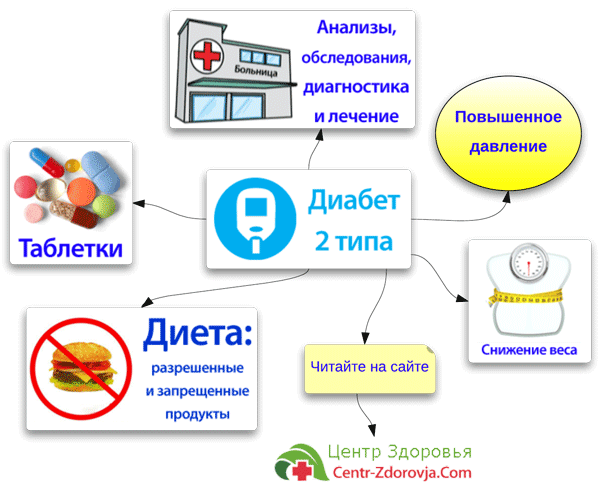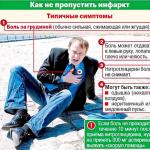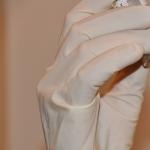Type 2 diabetes is a chronic disease in which carbohydrate metabolism is disrupted and the level of sugar (glucose) in the patient’s blood is higher than normal. The epidemic of this disease is intensifying around the world. It probably hasn't spared you either. After reading the article, you will learn how to take control of type 2 diabetes, lower your blood sugar and keep it consistently normal. Understand the causes and diagnosis, how to distinguish insulin-dependent diabetes from autoimmune type 1 diabetes. Learn everything you need to know about treating diabetes with diet, pills and insulin. Study detailed lists of prohibited, permitted and recommended products. Read which diabetes medications are beneficial and which are harmful.

Type 2 diabetes: detailed article
Type 2 diabetes: page contents
Type 2 diabetes is dangerous due to its complications - cardiovascular diseases, leg amputation, blindness, kidney failure. The treatment methods that you will learn about below are guaranteed to protect you from the development of complications. allows you to reduce sugar to normal and keep it stably normal 24 hours a day, on an empty stomach and after each meal. Moreover, this diet is nourishing and tasty, even luxurious. It reduces not only blood sugar, but also blood pressure and “bad” LDL cholesterol. Tens of thousands of diabetic patients have already learned about this diet, switched to it and are enjoying good sugar levels. Now you! In addition to diet, learn how to treat diabetes with pills and insulin.
Diagnostics
Typically, diagnosing type 2 diabetes is not difficult for a doctor. Because patients come to the doctor at a late stage of the disease, with severe symptoms and in serious condition. There are exact criteria for how high your blood sugar needs to be before you can be diagnosed with diabetes. Read more in the article “Blood sugar norms” - for children and adults, men and women, young, middle-aged and elderly people. If you suspect diabetes, the first step is to measure your blood sugar. This can be done at any time. You don't have to wait several hours to measure your fasting sugar. Based on the measurement results, a diagnosis is made - diabetes mellitus or impaired glucose tolerance, prediabetes.
Sometimes it can be difficult to distinguish type 2 diabetes from type 1 diabetes. These diseases require fundamentally different treatments, so it is important to make an accurate diagnosis. The main feature: all patients with type 2 diabetes are overweight, obese. If the patient is slender or thin, he definitely does not have type 2 diabetes, but type 1 autoimmune diabetes or LADA. Slim and thin people should not be diagnosed with type 2 diabetes! In patients with type 2 diabetes, the level of insulin and C-peptide in the blood is normal or elevated, while in patients with type 1 diabetes it is reduced. Type 2 diabetes develops gradually, while type 1 diabetes usually begins acutely. Patients with type 1 diabetes typically have antibodies to insulin and pancreatic beta cells in their blood. However, it is not necessary to undergo expensive blood tests for antibodies to correctly determine the type of diabetes and prescribe appropriate treatment.
People with a slender and thin build need to study the article “LADA diabetes” and be treated as written in it. It happens that an obese patient with type 2 diabetes begins to rapidly lose weight. The pills stop helping him, and his blood sugar skyrockets. This means that due to years of improper treatment, type 2 diabetes has progressed to severe type 1 diabetes. We urgently need to start injecting insulin. Read the article “Insulin therapy regimens” for more details. Discuss with your doctor which insulin to use, how many times a day and in what dosage.
What tests need to be taken?
Normal blood sugar
The blood sugar level for patients with type 2 diabetes, which is used by official medicine, is too high. This is done to make the work of doctors easier and reduce anxiety for patients. In healthy people, blood sugar levels on an empty stomach and after meals do not rise above 5.5 mmol/l. You should strive for this too. The doctor will tell you that sugar 7-9 mmol/l is excellent. However, with such sugar levels, diabetes complications develop, albeit slowly. The risk of dying from a heart attack or stroke increases by at least 2 times, compared with people whose carbohydrate metabolism is not impaired.
Insulin
Most people with type 2 diabetes have normal or even elevated levels of insulin in their blood. Such patients need to follow a diet, exercise, and there is no point in taking insulin injections. You need to try to increase the sensitivity of tissues to your own insulin, which is produced by the pancreas. Physical activity and the medicine metformin (Siofor, Glucophage) help with this. Injection of insulin is necessary only for patients whose type 2 diabetes, due to prolonged improper treatment, has turned into severe type 1 diabetes. In such patients, the pancreas becomes exhausted and loses its ability to produce insulin. This problem has to be compensated for by daily injections.
Medicine recommends giving insulin injections to diabetic patients who already have enough insulin in their blood. This approach to treatment harms patients. First of all, take blood tests for C-peptide and fasting plasma insulin. If these indicators turn out to be normal or elevated, then do not rush to get injections. As you already know, first of all you need to follow a low-carbohydrate diet. Switch to it - and within 2-3 days your blood sugar levels will decrease. Check this with a glucometer. Physical activity also increases tissue sensitivity to insulin. This is exactly what patients with type 2 diabetes need. Strength training in the gym and/or relaxed jogging give a magical effect. If you seriously engage in physical exercise, then with a 99% probability you will not need to inject insulin. Siofor and Glucophage tablets help 5-10 times worse than physical activity.
What are the features of calculating insulin doses?
Insulin can be extended-acting (long-acting) or fast-acting. As a rule, patients with type 2 diabetes start with 1-2 injections of extended-release insulin per day. Some of them also have to take rapid-acting insulin injections before breakfast, lunch and dinner. Diabetics who follow a low-carbohydrate diet require very low doses of insulin. They are usually 2-7 times lower than the standard doses that doctors are used to. The schedule of injections and insulin dosage is determined by blood sugar levels during the day, as well as by the diet of the diabetic patient. Do not immediately inject yourself with a high dose of insulin prescribed by your doctor, otherwise your blood sugar will drop below normal and symptoms of hypoglycemia will appear. Pay attention to the exact dosage calculation.
Diet for type 2 diabetes
Diet is the main treatment for type 2 diabetes. No amount of medication, exercise or even insulin will help if the patient does not follow a healthy diet. To get your diabetes under control, you need to stop eating foods that raise your blood sugar. For your convenience, lists of prohibited and permitted products have already been prepared. Study them in the article "". You can print out grocery lists, hang them on your refrigerator, and take them with you. After switching to a low-carbohydrate diet, you will have to reduce the dosage of sugar-lowering pills, insulin and hypertension medications several times. Prepare for this in advance.
The type 2 diabetes diet you learned about here may not be the same as your doctor's recommendations. Doctors traditionally prescribe a “low-fat” or “balanced” diet #9. This diet causes painful chronic hunger, and most importantly, it does not help bring blood sugar back to normal. Switch to a low-carb diet and use a glucometer to see if your sugar levels drop significantly. If you are concerned about the consumption of dietary fats and cholesterol, then study the article on the prevention and treatment of atherosclerosis. A low-carbohydrate diet not only lowers blood sugar, but also “bad” cholesterol and blood pressure. Take blood tests regularly and after 6-8 weeks you will see that the ratio of “bad” to “good” cholesterol improves.
What can't you eat?
If you want to achieve good results in treating diabetes, then you should not eat foods that are on the list of prohibited foods for a low-carbohydrate diet. Please note that you should not eat any fruits or berries at all. They increase blood sugar and therefore do many times more harm than good.
Watch a video about fruits for diabetics. Dr. Bernstein discusses this issue from his perspective as a Type 1 diabetic. His interlocutor is a parent whose son has autoimmune diabetes. Tens of thousands of patients have already maintained stable sugar levels with the help of a low-carbohydrate diet. Everything that is said in the video about the dangers of fruits also applies to patients with type 2 diabetes.
Try not to eat a single gram of prohibited foods - at home, while traveling, in restaurants, on vacation, in nature, at a party, on an airplane, etc. Every piece of junk food you eat brings you closer to your grave. You need to find other pleasures in life that you can use to replace forbidden delicacies.
What can you eat?
Above is a link to a page that contains lists of allowed and prohibited foods for diabetics. Eat meat, fish, poultry, eggs, as well as vegetables, greens and nuts that contain fiber. Drink plenty of water and herbal tea. If you do not have heart failure and are not bothered by edema, then you need to drink 30 ml of liquid per 1 kg of body weight every day. For people weighing 90 kg, this is about 2.7 liters of fluid per day. Particularly valuable food products are sea fish that live in cold waters, olives, avocados, and nuts, especially Brazil nuts. However, you can do without expensive products. Pay attention to chicken eggs. They contain the ideal composition of amino acids and have an affordable price. Don't be afraid of the cholesterol they contain.
Is it possible to drink alcohol?
It is okay to drink alcohol if you are able to maintain moderation. Alcoholic drinks that do not contain sugar and fruit juices are suitable for diabetic patients. Dry red wine is best. Avoid drinking sweet wines and cocktails. It is undesirable to drink dark beer. Drinks with a strength of 40 degrees are fine in moderation if you do not have alcohol addiction, liver or pancreas diseases. Read the article “Alcohol for diabetes” for more details. For many people with diabetes, moderate alcohol consumption makes it easier to stick to a low-carbohydrate diet. But if you haven't drank before, you shouldn't start.
What fruits can you eat?
Any fruits and berries are strictly prohibited. They contain harmful fructose, increase blood sugar and therefore do many times more harm than good. Eat vegetables, greens and nuts. You will get enough vitamins from these foods that are allowed on a low-carb diet. Your diet will contain more vitamins than the diet of the “average” person who eats fruits and cereals. Using a glucometer, you can easily verify that fruits raise your blood sugar. So stay away from them.
What grains can I eat?
No grains should be consumed. Any products made from cereals and flour cause an immediate and strong jump in blood sugar. Many diabetic patients believe that buckwheat is good for them. This is a deep misconception. After eating buckwheat, sugar soars within a few minutes, and then it is almost impossible to bring it back to normal. Do not eat any grains, flour or legumes. Use cabbage and green beans as a side dish.
Can you eat sugar?
Sugar is a concentrated source of glucose, the fastest-acting carbohydrate. Sugar, even in small doses, is harmful to diabetics. Don't eat table sugar. Learn to drink unsweetened tea. Sugar is discreetly added to many foods during cooking without warning to consumers. In particular, prepared vegetable salads may contain sugar. At the bazaar, sellers can use sugar to disguise the fact that their cottage cheese has already gone sour. Stay away from such products.
Which sweetener is better?
For type 2 diabetes, it is not recommended to use any sweeteners. Even those substitutes that do not increase blood sugar raise insulin levels. And this is not desirable, because insulin stimulates the deposition of fat, blocks its burning, and also increases blood pressure. This is why diabetics who use sweeteners have little to no chance of losing weight. Do not eat “chemical” sweeteners in tablets or stevia. Diabetic sweets containing fructose are pure poison. Type 2 diabetes is a milder disease than autoimmune type 1 diabetes. But patients with type 1 diabetes can use sweeteners, and patients with type 2 diabetes are not recommended.
Is it possible to fast if you have type 2 diabetes?
During fasting, your blood sugar will return to normal and you may lose weight. But almost no one manages to maintain the success achieved for a long time. Type 2 diabetics usually return to binge eating after they break the fast. Their body weight and blood sugar rebound even more. Therefore, fasting does not cure diabetes, but worsens its course. Instead of fasting, try a low-carb diet. It does not cause chronic hunger, so it can be easily followed all the time. This diet provides a real opportunity to bring blood sugar back to normal and keep it consistently normal. It is filling and tasty, even luxurious.
How much water should you drink?
Many people, and particularly those with type 2 diabetes, suffer from dehydration without realizing it. Dehydration is especially common in older people, whose thirst control center in the brain is damaged due to age-related atherosclerosis. Drink 30 ml of liquid per 1 kg of body weight per day. A person weighing 70 kg needs to drink at least 2.1 liters of fluid every day. Coffee does not saturate the body with water, but rather increases dehydration. Drink clean water and herbal teas. Explore. Drinking more fluids is a simple, safe and free way to quickly feel better.
Weight loss
To date, there are no effective and harmless means for weight loss for type 2 diabetes. In addition to metformin tablets (Glucophage, Siofor), which allow you to lose several kilograms as long as the patient takes them daily. But even while taking this medication, few obese diabetics manage to achieve normal body weight. Drugs and surgical methods that allow significant weight loss have side effects. Their harm outweighs their benefits. The short-term effect comes at the cost of a significant deterioration in health. Not to mention the money.
Type 2 diabetes and high blood pressure
High blood pressure in type 2 diabetes is difficult to treat using conventional medicine. Patients are usually prescribed to take at least two medications for hypertension, or even 3-4 types of tablets at the same time. People with diabetes usually have elevated levels of insulin in their blood. You already know that this hormone stimulates fat storage and blocks weight loss. In addition, it causes fluid retention, swelling, and also has a vasoconstrictor effect. All of these factors increase blood pressure.
Thus, increased levels of insulin in the blood are the cause of hypertension in patients with type 2 diabetes. Blood pressure pills muffle the symptoms, but do not affect the cause of the disease. normalizes the amount of insulin in the blood plasma. It lowers not only blood sugar, but also blood pressure. After switching to this diet, you will have to significantly reduce the dosage of your hypertension medications, otherwise your blood pressure will drop excessively. You may be able to completely give up harmful and expensive “chemical” medications.
The author of the material is Samoletova Danaya Yakovlevna, endocrinologist and therapist, candidate of medical sciences. Has more than 10 years of experience working with patients. Find out how to get an appointment with her (Ufa, Russian Federation) or get a consultation via the Internet. Do not take strong medications on your own initiative. Is it dangerous! Do not try to replace the treatment prescribed by your doctor by taking dietary supplements.


